The Nature of Soils
In the world of geology, the study of soils is a fascinating journey into the heart of our planet’s geological processes. Soils are not just dirt beneath our feet; they are the result of intricate interactions between physical, chemical, and biological forces. In this comprehensive guide, we will delve into the nature of soils, exploring how they are formed and the various processes that shape them. From physical weathering to chemical transformations and the influence of biological agents, we will uncover the secrets hidden beneath the Earth’s surface.
Understanding Soil Formation
Soils come into existence through the transformation of pre-existing rock masses, often referred to as the “parent” rock. This transformation is a consequence of environmental processes that work relentlessly over geological time scales. These processes can be broadly classified into three categories:
1. Physical Processes
Physical processes encompass a range of natural actions that break down rocks. Temperature changes and the forces of water, wind, and glaciers play a significant role in this process. Here’s a closer look at the mechanisms involved:

- Temperature Changes: Rocks are subjected to temperature fluctuations, leading to expansion and contraction of minerals at different rates. This can result in internal changes and fissures within the rock, setting the stage for further breakdown.
- Water Erosion: Water, a powerful agent of erosion, can disintegrate rocks in multiple ways. It can erode rock fragments, freeze within cracks (generating internal stresses), and contribute to weathering through wet and dry cycles.
- Wind and Gravity: Wind and gravity also play their part in physically breaking down rocks. These forces transport rock fragments to other locations, where further weathering can occur. The physical processes create smaller rock fragments, which are eventually transformed into soil.
2. Chemical Processes
Chemical phenomena have a profound impact on rocks, causing changes that can lead to disintegration or cementation. Some key chemical processes include:
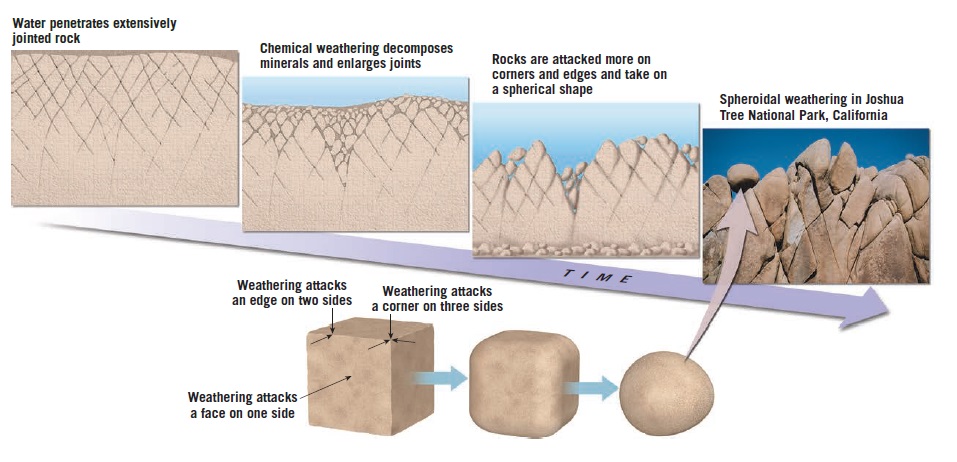
- Hydration: Minerals like anhydrite or sulphate hemi-hydrate can transform into gypsum or sulphate di-hydrate through hydration processes.
- Dissolution: Water can dissolve salts, such as sulphates, in rocks.
- Oxidation: Environmental agents can oxidize iron-bearing minerals in rocks.
- Cementation: Water containing carbonates or other dissolved minerals can lead to the cementation of rock particles.
These chemical processes can either break down the rock or bind its particles together.
3. Biological Action
Biological activity, particularly bacterial activity, plays a pivotal role in soil formation. Bacteria decompose organic matter and act as catalysts for reactions involving inorganic constituents. They also facilitate the mixing of organic matter with other particles generated by physical and chemical actions.
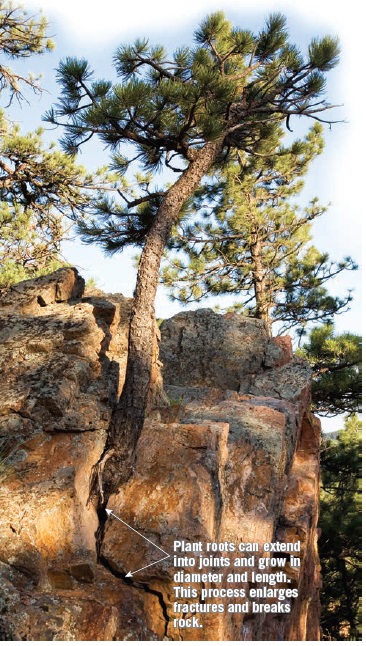
The collective impact of these three processes results in the alteration and weathering of rock, leading to the creation of a weathering profile. In this profile, the parent rock is located furthest from the surface and at the lowest position, while the soil occupies the topmost layer. Soils can be categorized as either residual or transported, depending on their formation and movement.
- Residual Soils: These soils develop in situ and remain in their original location, closely associated with the parent rock.
- Transported Soils: These soils, such as colluvial or alluvial deposits, have been transported from their original formation location to another site.
Let’s explore the various processes involved in soil formation in more detail:
Physical Weathering: The Sculptor of Rocks
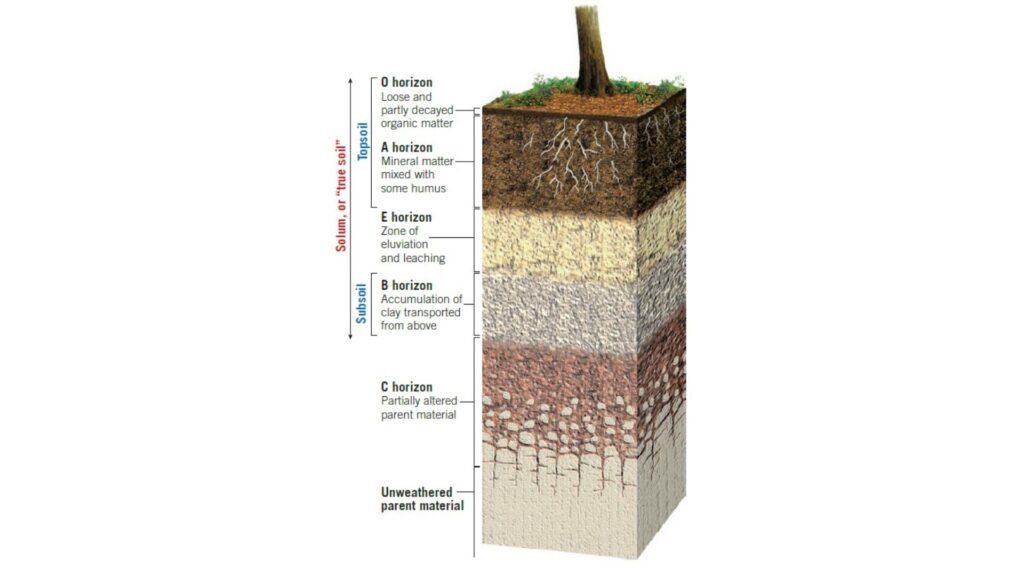
Physical weathering, also known as mechanical weathering, is the initial stage in soil formation. It’s the natural sculptor that shapes rocks over time. Key processes in physical weathering include:
Frost Action
When water enters cracks in rocks, it can freeze and expand, generating tremendous internal pressures. This expansion can fracture the rock, leading to the formation of smaller rock fragments.
Thermal Expansion and Contraction
Rocks contain minerals with varying coefficients of thermal expansion. As they heat up and cool down, these minerals expand and contract at different rates, causing stress within the rock.
Salt Crystal Growth
The growth of salt crystals within the pore spaces of rocks can exert pressure on the surrounding rock, contributing to its disintegration.
Exfoliation
This process involves the peeling away of outer layers of rock due to pressure release. Over time, the outer layers flake off, exposing fresh rock beneath.
Physical weathering plays a fundamental role in creating the initial conditions for soil development. These broken rock fragments are the building blocks of future soil.
Chemical Transformations: Altering Rock at the Molecular Level
Chemical processes operate in conjunction with physical weathering, often accelerating the breakdown of rock. Here’s a deeper dive into the chemical transformations that take place:
Hydration Reactions
Minerals like anhydrite can undergo hydration, turning into gypsum. This process is facilitated by the absorption of water molecules.
Salt Dissolution
Water can dissolve soluble salts present in rocks. For example, sulphates can dissolve in water, gradually removing them from the rock matrix.
Oxidation
The presence of environmental agents, such as oxygen, can lead to the oxidation of iron-bearing minerals. This not only alters the color of rocks but also weakens their structure.
Cementation
When water infiltrates rocks and carries dissolved minerals, it can lead to the cementation of rock particles. These particles bond together, creating a more solid structure.
Chemical transformations often lead to the disintegration of rocks, making them more susceptible to further weathering. The changes at the molecular level have a profound impact on the overall soil composition.
Biological Agents: Nature’s Catalysts
Biological activity introduces yet another layer of complexity to soil formation. Bacterial activity, in particular, plays a crucial role:
Organic Matter Decomposition
Bacteria break down organic matter in rocks, contributing to the formation of humus, a critical component of fertile soils.
Facilitating Chemical Reactions
Bacteria can catalyze chemical reactions involving inorganic constituents within rocks. They help release essential nutrients that become part of the soil.
Mixing Organic Matter
Bacterial activity ensures the effective mixing of organic matter with other particles generated by physical and chemical processes. This results in a more homogeneous soil composition.
Biological agents are the invisible architects of fertile soil, making it suitable for plant growth and ecosystem sustainability.
The Soil Formation Process
The culmination of physical, chemical, and biological processes results in the creation of soil. The weathering profile, as illustrated in Figure 1, showcases the position of the parent rock and the soil:
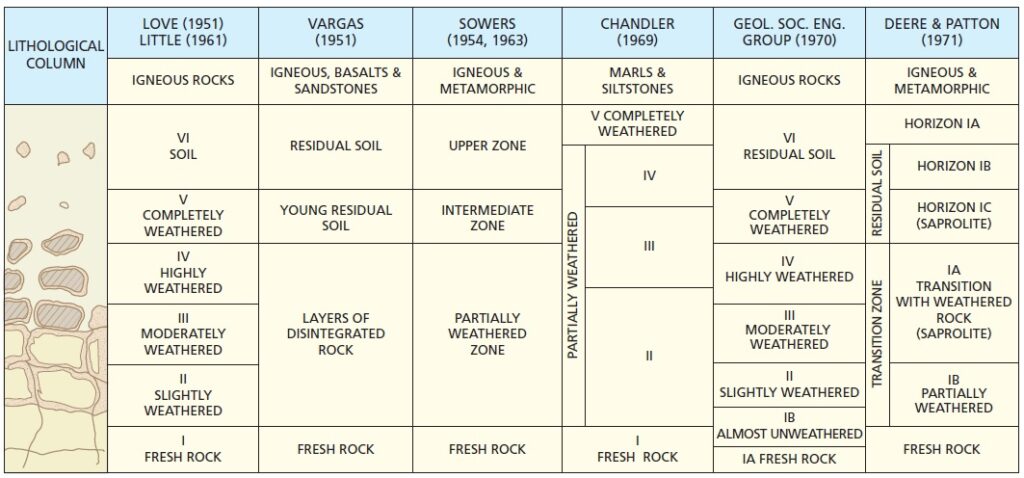
In this profile, the parent rock is located at the deepest layer, farthest from the surface, while the soil occupies the topmost position. The transformation of rock into soil is a testament to the continuous cycle of Earth’s geological evolution.
Types of Soil Formation
Soil formation can occur in various environments and under diverse conditions. The outcome of soil formation can be classified into two main categories:
Residual Soils
Residual soils are those that have developed in situ, remaining in their original location. They have a close association with the parent rock, and their composition often reflects the characteristics of the underlying rock.
Transported Soils
Transported soils, on the other hand, have been displaced from their formation location and relocated to a different site. These soils, such as colluvial or alluvial deposits, have experienced the forces of erosion, transport, and redeposition.
The type of soil formed depends on the interplay of geological, climatic, and environmental factors. Figure 2 illustrates the different processes involved in soil formation:
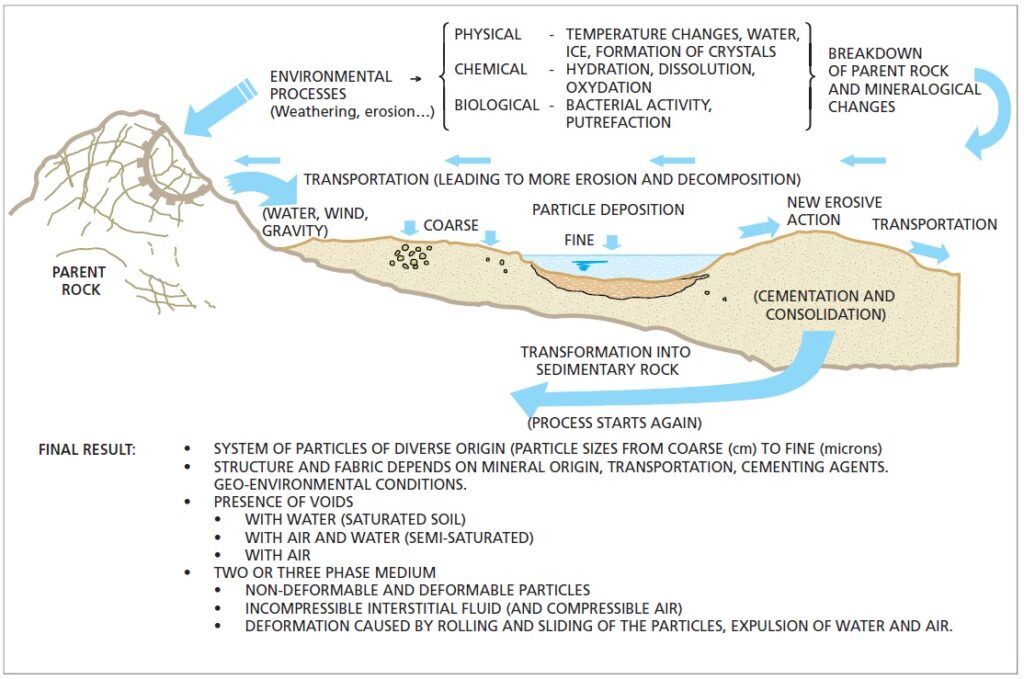
Conclusion
The nature of soils is a testament to the intricate dance of geological, chemical, and biological processes. Soil formation is a dynamic, ongoing phenomenon, shaping the Earth’s surface and playing a vital role in sustaining life on our planet. Understanding these processes not only enriches our knowledge of the natural world but also holds practical importance in fields like agriculture, civil engineering, and environmental science. So the next time you take a walk and feel the earth beneath your feet, remember that it’s not just soil – it’s a canvas painted by the forces of nature over millennia.
As we’ve journeyed through the realms of soil formation, from the relentless physical weathering to the subtle chemical transformations and the subtle influence of biological agents, we hope you’ve gained a deeper appreciation for the intricate world beneath our feet. Soils are more than just dirt; they are a living testament to the Earth’s geological history.
If you have any questions or want to explore further into the realm of geology and engineering geology, feel free to reach out. We’re here to unearth the knowledge you seek.
Read more on blog: